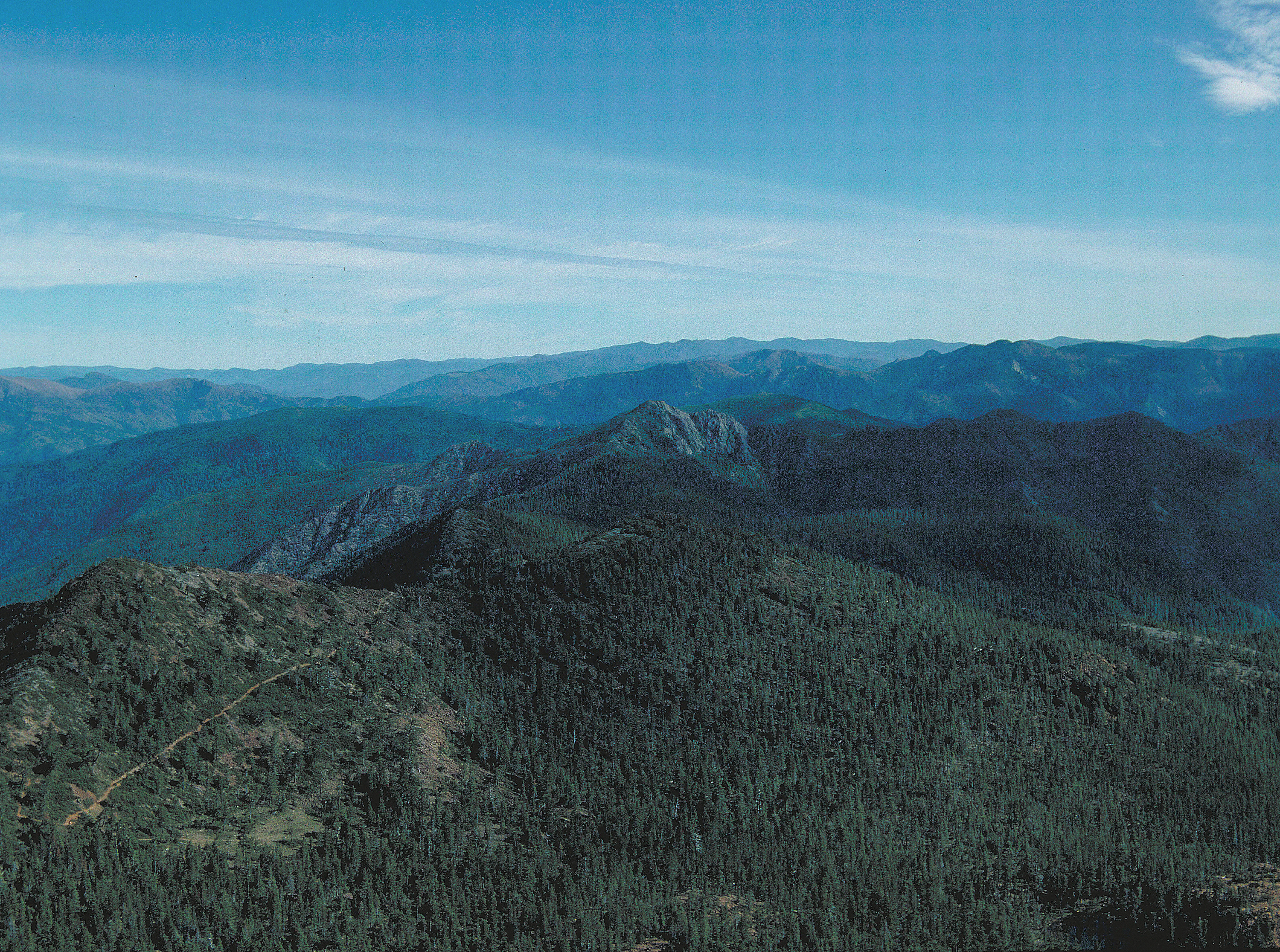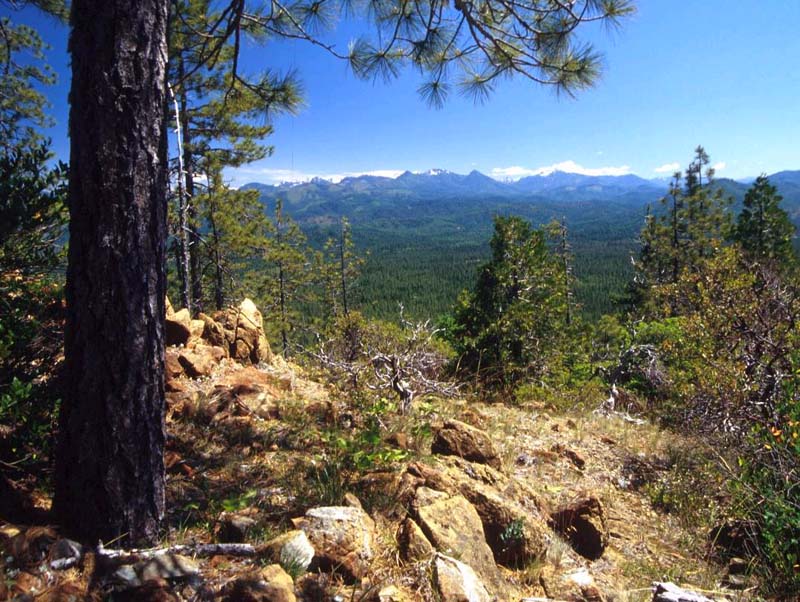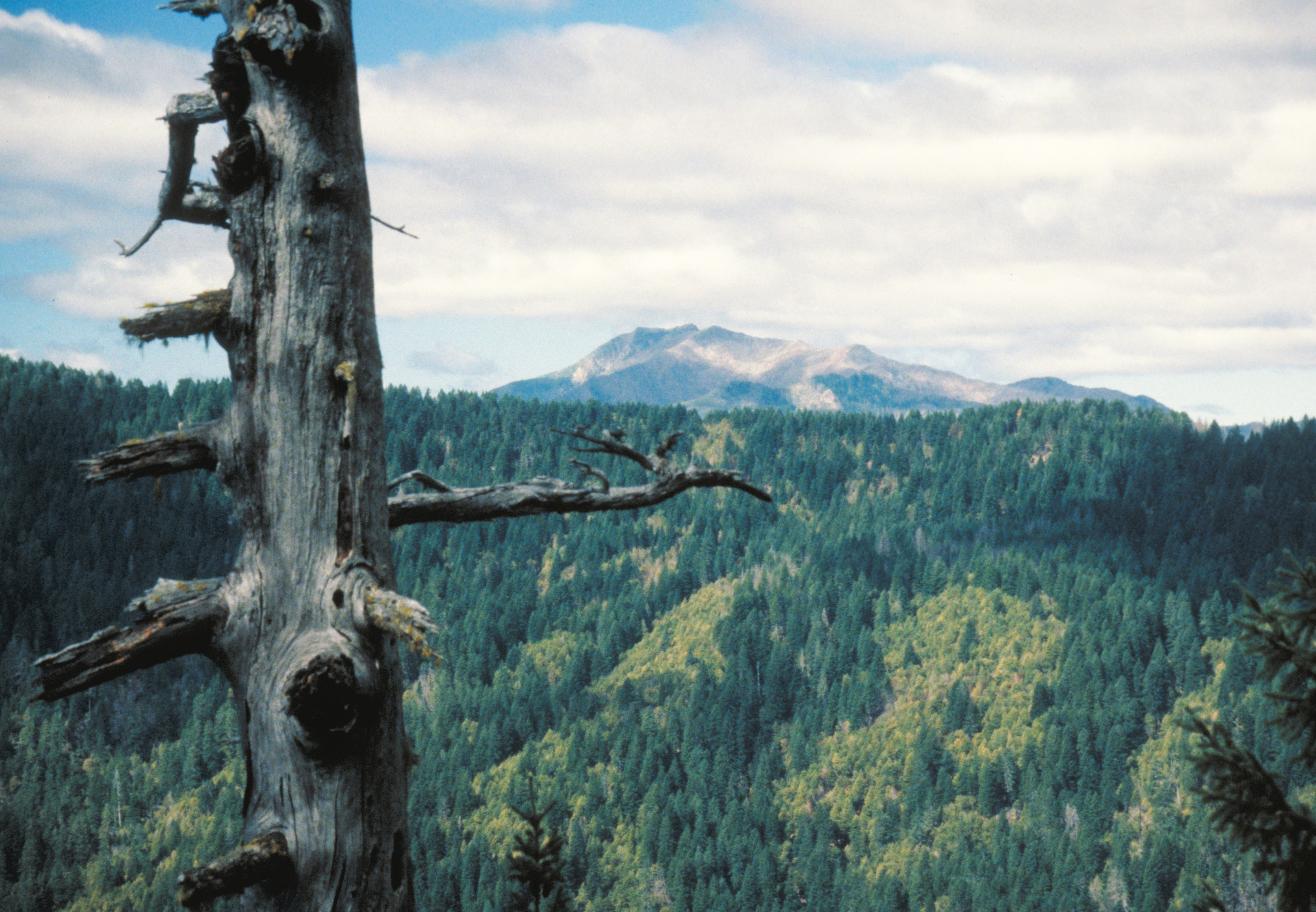The Siskiyou Regional Education Project, founded in 1983 in Takilma, Oregon, began as a grassroots environmental group organized around the Bald Mountain Road blockade on the boundary of the Kalmiopsis Wilderness. Pedro Tama, a forestry worker from the Forks of Salmon in California, and Lou Gold, a former University of Illinois professor, were drawn together to save what was left of Oregon’s old-growth forests.
Tama and Gold met in 1983 during the first blockades of Bald Mountain Road, which was being cut into the roadless area next to the wilderness. That action led to six consecutive human blockades of the bulldozers used to build the road, forty-four arrests, and a legal victory that halted the construction. Gold would remain on Bald Mountain for several more summers, creating a prayer circle with flagpoles at the top of the mountain. He began telling stories and carving walking sticks, which he gave as gifts to the occasional visitors.
During the early years of the Siskiyou Regional Education Project, Tama and a talented young staff published the Siskiyou Country Journal, a bi-monthly magazine that gave voice to the new eco-politics in the small, back-to-the-land communities of southwestern Oregon. Their purpose was to educate and inspire the local community about the activities in the bioregion. Gold developed a slideshow and traveled to college campuses, an effort that generated over 3,000 letters in support of a Siskiyou National Park. In 1990, after proposing a study area for the bioregion, the Smith River National Recreation Area was created, although the wild lands to the north remained unprotected.
The Journal also reported news of an annual three-day conference that brought together advocates for the area. By 1987, the group had expanded to host the third annual Bioregional Conference at Humboldt State University, attended by 700 people. By that time, the Siskiyou Country Journal was 60 pages long with a circulation of 2,500. The project had achieved the financial support of foundations and was able to hire a staff.
Hundreds of protesters gathered in 1995 to stop logging related to the Sugarloaf Timber Sale near Oregon Caves National Monument. Many protestors were arrested, including Siskiyou Project Executive Director Steve Marsden and Congressman Jim Jontz from Indiana. Although the timber sales eventually went forward, Siskiyou Project staff used the publicity—including a live CNN broadcast and other national media coverage—to gather more members and expand operations.
In 1997, the Siskiyou Project hosted its First Conference on Siskiyou Ecology, attended by 300 scientists, students, land managers, and local citizens. The Siskiyou Field Institute offered over 33 science-based courses, and in 2004 became its own nonprofit organization in partnership with Southern Oregon University.
In 1998, the Siskiyou Project produced the conservation assessment and science-based plan for the Klamath-Siskiyou eco-region. This conservation biology assessment included comprehensive regional resource maps. The Siskiyou Project worked through administrative channels to get hundreds of additional acres added to the Clinton-era Northwest Forest Plan. Their public outreach campaign persuaded the Forest Service to deny a large strip mine along Rough and Ready Creek, the most botanically diverse watershed in Oregon. They also helped create a 1,162-acre Area of Critical Environmental Concern, called the “Redrock Rainforest.”
By 2000, the Siskiyou Project's new Web site and Voice of the Wild Siskiyou newsletter helped the organization reach a growing network of supporters. This network benefited Siskiyou Project staff as they launched the Siskiyou Wild Rivers National Monument campaign.
Since 2006, the Siskiyou Project has opened an office in Grants Pass and continued its Siskiyou Wild Rivers campaign. The group’s new Community Forestry and Restoration Program centers on ecological stewardship and thinning public lands for fire safety. Additionally, Siskiyou Project staff collaborate with the Forest Service and community groups to develop “demonstration projects” with workforce training programs.
-
![Kalmiopsis Wilderness.]()
Kalmiopsis, vista 3.
Kalmiopsis Wilderness. Photo Steve Boutcher, courtesy Wilderness.net, 3154
-
![Siskiyou National Forest]()
Siskiyou National Forest.
Siskiyou National Forest Courtesy United States Forest Service
Related Entries
-
![Kalmiopsis Wilderness]()
Kalmiopsis Wilderness
The 179,850-acre Kalmiopsis Wilderness, located in southwestern Oregon …
-
![Siskiyou National Forest]()
Siskiyou National Forest
The Siskiyou Forest Reserve was created on March 2, 1907; within two da…
Map This on the Oregon History WayFinder
The Oregon History Wayfinder is an interactive map that identifies significant places, people, and events in Oregon history.




